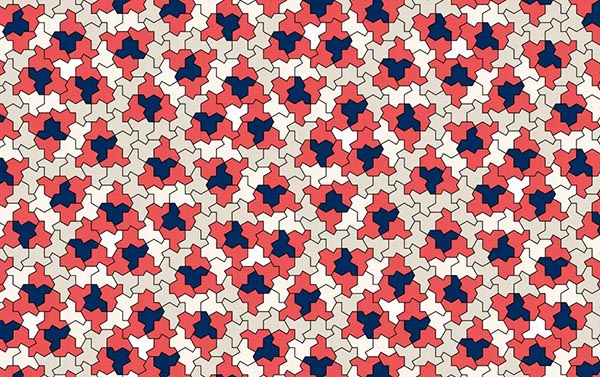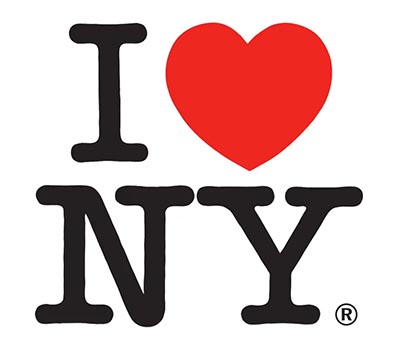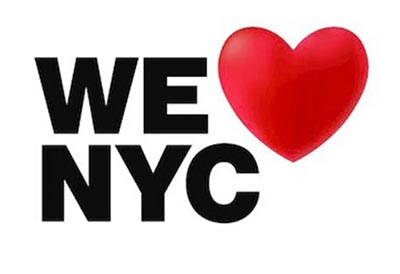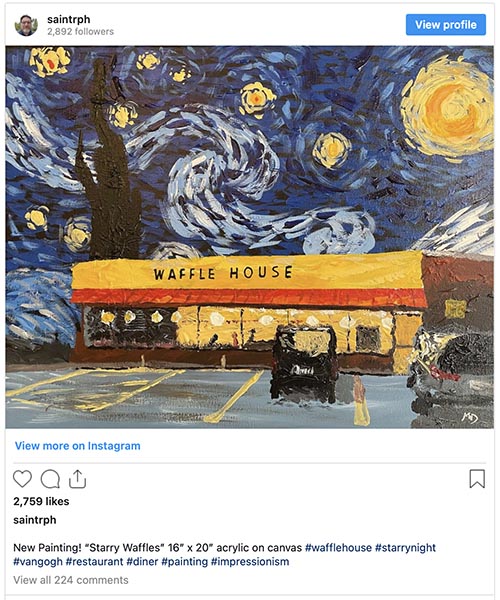Key Change
The guy who wrote Shift Happens is going to have add an update. Via Core77, Australia-based design and engineering firm Flux has created a transparent keyboard with mag-lev keys that sit on top of an HD display.

You can change the labels for the keys, as well as the background image.
“Each key is suspended by two pairs of magnets which act as a spring providing the return force and a satisfying low friction travel in either tactile or linear switch varieties. The position of each key is sensed by hall effect sensors positioned underneath the screen.
“Hall effect sensors measure the strength of magnetic fields. They can be incredibly precise and are frequently used in applications where high reliability is a priority. The sensors used in the Flux Keyboard do not act like switches but rather can sense the precise position of each key.”
It was a hit on Kickstarter, with $1.3 million pledged and three weeks left to go. See it in action:
Hats Off to “The Hat”
Are you thinking of retiling your kitchen or bathroom? Looking for a unique style? If so, good news! Mathematicians have just identified a shape that previously only existed in theory: a 13-sided configuration called “the hat” that can tile a surface without repeating. Says Gizmodo:
The hat is what’s known as an aperiodic monotile, which means that a single shape can tile a surface without any translational symmetry, or without its pattern ever repeating. The famous Penrose tilings are an example of aperiodic tiling, where the pattern is aperiodic but uses two different shapes.

The hat tiling only uses one shape, an “einstein,” which is German for “one stone,” making the pattern an aperiodic monotile. The 13-sided hat is a polykite shape, consisting of eight kites connected at their edges. The existence of an aperiodic monotile was purely theoretical until a research team led by mathematician David Smith and colleagues proved its existence in a preprint paper posted online this month.
It’d also make a great carpet or wallcovering. Digital textile designers, a market awaits!
Meet the Meat
If you read our Newsfeed regularly, you know that Toppan is involved in some out-there printing projects. Most of the press releases we receive from them involve printed electronics of various kinds, but one release we recently received was even more out-there: “Osaka University, Shimadzu, Itoham Yonekyu, Toppan, and SIGMAXYZ have established ‘the future creation consortium for cultured meat.’”
The consortium focuses on “concrete initiatives for practical implementation of the manufacturing technology of edible cultured meat using 3D bioprinting.” Through cross-company collaboration, we will carry on “developing 3D bioprinting technology for application”, “establishing an integrated value chain from production to logistics”, and “contributing to legislation through collaboration with government offices and private companies.” By exhibiting at the 2025 World Exposition in Osaka, Kansai, we will concentrate on “providing information that helps people understand cultured meat,” aiming to realize the world’s first use of cultured meat.
Osaka University has developed 3D bioprinting technology that can produce muscle tissue and is expected to be used in the fields of food, regenerative medicine, and drug design.
In August 2021, Osaka University and Toppan published a paper on a technology that produces different kinds of fibrous tissues, such as muscle, fat, and blood vessels using 3D printing and bundles up and integrates them.
If you’re a commercial printer looking for a new market to expand into, how about 3D-bioprinted meat?
Meet More Meat
In more meat news, via The Guardian, Australia-based Vow, a “cultivated meat company” (apparently there is such a thing), has developed a cultivated meat from the DNA of the extinct woolly mammoth and used it to make a “mammoth meatball.”
Vow worked with Prof Ernst Wolvetang, at the Australian Institute for Bioengineering at the University of Queensland, to create the mammoth muscle protein. His team took the DNA sequence for mammoth myoglobin, a key muscle protein in giving meat its flavour, and filled in the few gaps using elephant DNA.
Kind of like if Jurassic Park were a restaurant. Even yummier:
This sequence was placed in myoblast stem cells from a sheep, which replicated to grow to the 20bn cells subsequently used by the company to grow the mammoth meat.
There was a method to the mammoth madness:
“The goal is to transition a few billion meat eaters away from eating [conventional] animal protein to eating things that can be produced in electrified systems.
“And we believe the best way to do that is to invent meat. We look for cells that are easy to grow, really tasty and nutritious, and then mix and match those cells to create really tasty meat.”
Tim Noakesmith, who cofounded Vow with Peppou, said: “We chose the woolly mammoth because it’s a symbol of diversity loss and a symbol of climate change.” The creature is thought to have been driven to extinction by hunting by humans and the warming of the world after the last ice age.
While we have plant-based faux meat like the Impossible meats, but this approach uses “cultivated meat” that more closely replicates the taste of real meat, but without slaughtering animals or having the negative impact on the environment that beef farming has. Cultivated meat is currently only available in Singapore (cultivated chicken from a company called Good Meat) but two companies have passed an approval process in the US.
As for the mammoth:
No one has yet tasted the mammoth meatball. “We haven’t seen this protein for thousands of years,” said Wolvetang. “So we have no idea how our immune system would react when we eat it. But if we did it again, we could certainly do it in a way that would make it more palatable to regulatory bodies.”
Or any bodies, hopefully.
Fast’n’Bulbous
Speaking of cultivating animal cells, meat is fine, but this is far cooler. Says Ars Technica: “Human cells hacked to act like squid skin cells could unlock key to camouflage.”
Certain cephalopods like cuttlefish, octopuses, and squid have the ability to camouflage themselves by making themselves transparent and/or changing their coloration. Scientists would like to learn more about the precise mechanisms underlying this unique ability, but it's not possible to culture squid skin cells in the lab. Researchers at the University of California, Irvine, have discovered a viable solution: replicating the properties of squid skin cells in mammalian (human) cells in the lab.
Cephalopod skin is translucent and comprises an outer layer of pigment cells called chromatophores that control light absorption. Muscle fibers pull the chromatophores in different directions, elongating them and changing the color of the pigment. Beneath the chromatophores is a layer of iridophores, which can be tuned to reflect different wavelengths of light. In some cuttlefish and octopuses, there are also leucophores, which are similar to iridophores but they instead scatter the full spectrum of light and thus appear white. It’s these structures that allow these beasties to change their skin color to blend into backgrounds.
In 2015, Gorodetsky's lab created squid-inspired invisibility stickers to one day help soldiers disguise themselves, even from infrared cameras. The stickers were essentially thin, flexible layers of camo with the potential to take on a pattern to match the soldiers’ infrared reflectance to their background. Rather than killing squid to collect the reflectin proteins, they could express it in e. coli bacterial cultures. Then they coated the equivalent of common household packing tape with the modified bacteria. The stickers could be tuned merely by changing the thickness of the bacterial film. Thinner films appeared blue; thicker films appeared orange.
There are other potential applications:
Earlier this year, we reported that engineers at the University of Toronto drew inspiration from the squid to create a prototype for “liquid windows” that can shift the wavelength, intensity, and distribution of light transmitted through those windows, thereby saving substantially on energy costs. Gorodetsky said that one potential application of his own research is using reflectin proteins as sub-cellular molecular probes with a high refractive index, used in conjunction with advanced microscopy techniques. Such genetically encoded tags would not bleach inside human cells, enabling scientists to track cell structure to gain a better understanding of cell growth and development.
It's a safe bet that graphene is going to be involved at some point.
L’Eggo My Logo
One of the most iconic logo designs (at least on the East Coast) is Milton Glaser’s 1977 “I Love NY” logo:

Last week, it was given a redesign. This is what they came up with:

Was the Internet happy? Three guesses… Says the NY Times:
Just a few hours after the new “We Love NYC” logo was revealed on Monday, reaction on Twitter — and beyond — was not merely negative, but brutal.
Wow, backlash on the Internet. How unexpected.
Rafi Schwartz, a writer and co-owner of Discourse Blog, was succinct, yet philosophical, posting: “This sucks on every conceivable level and also on some levels that exist beyond human perception.”
Well, if the owner of Discourse Blog is against it, it must be bad!
So whose idea was the new design?
This new campaign is directed specifically at New York City — hence the C — and Graham Clifford, the designer and art director who oversaw the new logo, said the idea was to “give it more of a modern twist.”
Mr. Clifford used a font adapted from the one on subway signs, he told Times reporter James Barron. “The subway system is the veins or the beating heart of the city,” he said, adding that “you can have Wall Street types sitting next to construction workers. It’s a place where you can bring everybody together, and we’re cognizant of that.”
One can debate fonts and 3D hearts all day, but one change clashes with the intent of the original campaign, which had been to promote tourism throughout NY state, not just the city.
At the time, the state was in the midst of an economic crisis, with high levels of unemployment. Commercials and print advertising in the “I Love NY” campaign highlighted nature and culture in New York State, from Niagara Falls to Broadway, and encouraged tourism and vacation business.
We suspect that the big sign on I-87 north of Albany will not be updated.
Print magazine dives into the fray, talking with speak with COLLINS Creative Director Joseph Han about the new logo.
People freaked—and are freaking—out. Everyone has a take, and everyone is more than happy to tell you about it. Maybe all the noise is warranted, but that’s not for me to call.
What is warranted is an examination of the response itself, especially for graphic designers. Look at what a logo just did, what a piece of graphic design just did— an entire city of busy, hustling, no-nonsense New Yorkers just threw a tantrum. Not to mention the rest of the world.
…So, we can debate the execution of this new mark, but for me, it is of far more interest and consequence to talk about the unseen and often unfelt role of graphic design in the places we call home.
He does have a point. (He also points out the poor kerning of the original.) However, he adds:
The central issue with the “We Love NYC” logo is that many feel the outcome does not fulfill its intention. If the intention, as announced by the city officials, was to (admirably) counter pessimism, encourage civic engagement and pride, and feel more inclusive, this logo may miss those marks. Milton’s visual love letter to New York, on the other hand, hits them all masterfully:
The elegantly quirky American Typewriter typeface signals optimism and warmth
The original logo is easy to recognize in the sea of messy, noisy typography in NY (think street signs, store signage, and other typographic noise)
The personal resonance of the “I” imbues the mark with pride and encouragement
The simple, hand crafted heart is genuine and charming
The simple, stacked composition of “I Love NY” is easy to place in all the channels it needs to live and scale within.
And the world keeps kerning…
Sound of Knowledge
You obviously know what a logo is, especially if you read the previous item, but are you familiar with a “sound logo”? No, nor are we. A sound logo is something like Netflix’s “ta-dum,” HBO’s “aaaaaaah,” or Intel’s five-note chime. The Wikimedia Foundation—creator and maintainer of Wikipedia—decided it wanted a sound logo for Wikipedia and its other projects. So they held a “Sound of All Human Knowledge” contest, and they didn’t end up with Soundy McSoundface. Says The Verge:
The winning entry was submitted by Thaddeus Osborne, a nuclear engineer and part-time music producer from Virginia, USA. Here’s how he describes the sound:
“My sound logo welcomes its audience into a world of information. The sound of a page turning quickly becomes a library like a whirlwind of typing, clicking, and paper rustling that promises vast stores of wisdom followed by a friendly invitation. This is what I perceive the Wikimedia movement to be about, the open and encouraged sharing of knowledge. Lots and lots of knowledge.”
And this is what he came up with:
?? Wikimedians, are you ready?
— Wikimedia Foundation (@Wikimedia) March 28, 2023
We are thrilled to announce that we have found the winning entry to The Sound of All Human Knowledge contest! Fun fact: We used the actual sound logo to create the sound wave in this video. ?? #WikiSoundLogohttps://t.co/GykcY54WfE pic.twitter.com/RYhK2tVCmj
Huh. The sound of all human knowledge. OK. (We would have chosen something involving a printing press, but then we would, wouldn’t we?)
Osborne’s was one of 3,235 submissions that came in from 2,094 participants across 135 countries last year. Wikimedia community members helped to whittle these submissions down, and eventually 10 audio clips were presented for a vote.
The clip above was only a “demo”; it will need to be professionally re-recorded, and have different variations for various uses, such as social media or videos.
“Later this year, we will continue working with voice assistant and technology partners to adopt the winning logo to better identify Wikimedia content worldwide,” Wikimedia says in a press release.
Starry, Starry Waffle
If Vincent Van Gogh were alive today…well, he’d be really really old, so maybe he’d draw inspiration from a Waffle House. Pineville, La., artist Matt Dawson certainly did, creating a painting called “Starry Waffles.” As he told Fox35 Orlando:
“I love the Waffle House. I used to take my wife to a doctor in New Orleans when she was sick and every time on the way back we’d stop at the Waffle House in Sorrento, Louisiana,” Dawson said. “In addition to the tip, I’d put 5 bucks in the juke box for the server for her favorite artist. I just loved the memories there.”
Over the years, Dawson has painted a few Waffle House pieces and said they resonated with people. So this time, he really wanted to have some fun and “show the magic that I see when I see the Waffle House.”

You can check out more of Dawson’s work—and purchase it—at his Etsy shop. Van Gogh was Dutch, but if he’d been from Belgium, it would have to be a Belgian Waffle House.
Graphene Knows What You’re Thinking
Was it a good week for graphene news? It’s always a good week for graphene news! Researchers have developed graphene-based sensors for brain–machine interfaces. From (who else?) Graphene-Info:
Researchers from the University of Technology Sydney (UTS) have developed graphene-enhanced biosensor technology that enables the operation of devices, such as robots and machines, solely through thought control.
Coming soon to a theater near you: Graphene Scanners!
The user wears a head-mounted augmented reality lens which displays white flickering squares. By concentrating on a particular square, the brainwaves of the operator are picked up by the biosensor, and a decoder translates the signal into commands.
The technology was recently demonstrated by the Australian Army, where soldiers operated a Ghost Robotics quadruped robot using the brain-machine interface. The device allowed hands-free command of the robotic dog with up to 94% accuracy.
Now if they could control a real dog, they’d have something.
The technology has significant potential in fields such as defense applications, advanced manufacturing, aerospace and healthcare.
Doctors will soon be able to operate on patients…with their minds!
Animated Jif
Air travel is one of the most unpleasant activities on Earth, and part of that all-you-can-eat buffet of horribleness is airport security. While some of the post-9/11 security kabuki theater has eased, one that has remained is the need to keep putting all liquids in 3.4-oz. containers. It’s interesting, though, the things that the TSA thinks are liquids. Such as, for example, peanut butter. Via Food & Wine:
The Transportation Security Administration has spoken: You can’t bring your jar of peanut butter through airport security. Why? Because, according to them, it’s a liquid, not a solid.
Though this debate has raged on for some time, it was given new life last week when podcaster Patrick Neve attempted to take a jar of peanut butter through airport security.
Which begs the question: why in the name of all that’s holy does one need to take a jar of peanut butter on a plane? Regardless, here is the TSA’s explanation:
“You may not be nuts about it, but TSA considers your PB a liquid. In carry-on, it needs to be 3.4 oz. or less,” the TSA wrote in the caption of an Instagram post. It then added in the image that a “liquid has no definite shape and takes a shape dictated by its container.” (Clearly, it’s never had thick and chunky PB.)
There are always workarounds:
“What happens if I use a whole jar of PB on a sandwich and put it in a ziplock bag,” one commenter wrote. “If I freeze the peanut butter before my flight, can I bring it on board,” one commenter added.
What about butter itself, peanut or otherwise? Anyway, for those who always seem to want to bring the smelliest foods possible on a plane, here is some advice:
However, one way to get your peanut butter through TSA, is simply to have it in smaller containers. As TSA spokesperson, R. Carter Langston shared with the New York Times, “As we frequently seek to remind travelers: If you can spill it, spray it, spread it, pump it or pour it, then it’s subject to the 3.4-ounce limitation.”
The Dry Look
Not everyone uses a clothes dryer—many people are content to air dry their laundry on clotheslines. Even so, there are times when one needs to quickly dry one or a few articles of clothing. For those folks, there is Plus Minus Zero’s Compact Clothes Dryer. Via Core77, it folds up to a small size not much larger than a book:

To use it, you unfold it and the drying chamber inside drops down. Insert your garment, turn it on, and it blows hot air in to the drying chamber. It also has exhaust ports so you don’t end up incinerating your clothing.

The length of the drying chamber can be adjusted to the size of the garment(s) you are drying so as not to waste electricity. It is said to use half the amount of electricity of a conventional dryer.
You can see how it works in this video (directed by Ingmar Bergman by the looks of it):
Pop-Tartigan
Do you like sweaters? Pop-Tarts? If yes, then good news! Via Food & Wine, Pop-Tarts is releasing a new flavor—Frosted Banana Bread—and as a bit of tie-in merch, is also selling a limited-edition Pop-Tarts-themed sweater.
Created by crochet artisan London Kaye, the “granny square” crochet pattern was inspired by Pop-Tart’s well-known rectangular shape and those crispy brown colors it's beloved for post-toast. But if you want one, you need to act quickly, as just 60 of these exclusive, hand-knit sweaters will be available for purchase for $45. (Each sweater will also come with a box of the Frosted Banana Bread Pop-Tarts as a little treat.)


“There’s nothing better than curling up in a warm, crocheted sweater
Really? Is there?
so when I found out Pop-Tarts wanted to give their fans an extra cozy piece inspired by the new flavor, I knew this collab would be a match made in granny chic heaven,” Kaye said in a statement. “My team and I hand-crafted each Pop-Tartigan sweater with warm colors and crocheted features that are sure to be the perfect accessory to embrace your cozy side.”
They are selling just 20 sweaters a day on three dedicated days (March 29, March 31, and April 4). Visit BananaBreadPopTarts.com (we dare you).
WhatTheyThink is on Spring Break next week. We’ll be back April 10 with the online edition of our March/April issue: The Wide Format Issue. See you then.
Did anything catch your eye “around the Web” this week? Let us know at [email protected].
This Week in Printing, Publishing, and Media History
March 27
1845: German physicist, academic, and Nobel Prize laureate Wilhelm Röntgen born.
1869: American publisher and politician, and 65th Mayor of New York City James Harper dies (b. 1795).
1931: English author and playwright Arnold Bennett dies (b. 1867).
2006: Ukrainian-Polish author Stanis?aw Lem dies (b. 1921).
2012: American poet essayist and feminist Adrienne Rich dies (b. 1929).
March 28
1836: German-American brewer and founder of the Pabst Brewing Company Frederick Pabst born. (Did they sponsor the hipster Olympics?)
1842: First concert of the Vienna Philharmonic Orchestra, conducted by Otto Nicolai.
1868: Russian novelist, short story writer, and playwright Maxim Gorky born.
1994: How absurd: Romanian-French playwright and critic Eugène Ionesco dies (b. 1909).
March 29
1871: Royal Albert Hall is opened by Queen Victoria.
1886: John Pemberton brews the first batch of Coca-Cola in a backyard in Atlanta.
1943: English actor and comedian Eric Idle born, looking on the bright side of life.
1999: The Dow Jones Industrial Average closes above the 10,000 mark (10,006.78) for the first time, during the height of the dot-com bubble.
March 30
1853: Dutch-French painter and illustrator Vincent van Gogh born.
1880: Irish dramatist, playwright, and memoirist Seán O'Casey born.
1986: American poet and etymologist John Ciardi dies (b. 1916).
2004: English-American journalist and author Alistair Cooke dies (b. 1908).
March 31
1596: French mathematician and philosopher René Descartes born. (Apparently he thought.)
1631: English lawyer and poet John Donne dies (b. 1572).
1685: German organist and composer Johann Sebastian Bach born.
1732: Austrian pianist and composer Joseph Haydn born.
1809: Ukrainian-Russian short story writer, novelist, and playwright Nikolai Gogol born.
1855: English novelist and poet Charlotte Brontë dies (b. 1816).
1889: The Eiffel Tower is officially opened. (Not everyone in France was a fan; author Guy de Maupassant ate lunch every day at the tower’s base restaurant, because, he said, “inside the restaurant was one of the few places where I could sit and not actually see the Tower!”)
1906: The Intercollegiate Athletic Association of the United States (later the National Collegiate Athletic Association) is established to set rules for college sports in the United States.
1918: Daylight saving time goes into effect in the United States for the first time and, unfortunately, not the last.
1930: The Motion Picture Production Code is instituted, imposing strict guidelines on the treatment of sex, crime, religion and violence in film, in the U.S., for the next 38 years.
1951: Remington Rand delivers the first UNIVAC I computer to the United States Census Bureau. (And they’re still using it today.)
2016: Scottish comedian, actor and screenwriter Ronnie Corbett dies (b. 1930).
April 1
1854: Charles Dickens’ novel Hard Times begins serialization in his magazine Household Words.
1960: The TIROS-1 satellite transmits the first television picture from space.
1976: Apple Inc. is formed by Steve Jobs, Steve Wozniak, and Ronald Wayne in Cupertino, Calif.
2004: Google announces Gmail to the public.
April 2
1800: Ludwig van Beethoven leads the premiere of his First Symphony in Vienna.
1805: Danish novelist, short story writer, and poet Hans Christian Andersen born.
1840: French novelist, playwright, journalist Émile Zola born.
1872: American painter and academic, inventor of the telegraph and Morse code Samuel Morse dies (b. 1791).
1902: “Electric Theatre,” the first full-time movie theater in the United States, opens in Los Angeles.
1941: American radio host Dr. Demento born.
1956: As the World Turns and The Edge of Night premiere on CBS. The two soaps become the first daytime dramas to debut in the 30-minute format.
1973: Launch of the LexisNexis computerized legal research service.
April 3
1783: American short story writer, essayist, biographer, historian Washington Irving born.
1774: Irish novelist, playwright and poet Oliver Goldsmith dies (b. 1728).
1860: The first successful United States Pony Express run from St. Joseph, Mo., to Sacramento, Calif., begins.
1895: The trial in the libel case brought by Oscar Wilde begins, eventually resulting in his imprisonment on charges of homosexuality.
1898: American publisher, and co-founder of Time Magazine Henry Luce born.
1949: English singer-songwriter and guitarist Richard Thompson born.
1955: The American Civil Liberties Union announces it will defend Allen Ginsberg's book Howl against obscenity charges.
1973: Martin Cooper of Motorola makes the first handheld mobile phone call to Joel S. Engel of Bell Labs.
1981: The Osborne 1, the first successful portable computer, is unveiled at the West Coast Computer Faire in San Francisco.
2010: Apple Inc. released the first generation iPad, a tablet computer.
April 4
1581: Francis Drake is knighted for completing a circumnavigation of the world.
1768: In London, Philip Astley stages the first modern circus.
1818: The United States Congress, affirming the Second Continental Congress, adopts the flag of the United States with 13 red and white stripes and one star for each state (20 at that time).
1928: American memoirist and poet Maya Angelou born.
1975: Microsoft is founded as a partnership between Bill Gates and Paul Allen in Albuquerque, N.M.
April 5
1710: The Statute of Anne receives the royal assent establishing the Copyright law of the United Kingdom.
1908: American actress Bette Davis born.
1929: English songwriter and producer Joe Meek born.
1954: American singer-songwriter and guitarist Stan Ridgway born.
April 6
1483: Italian painter and architect Raphael born.
1861: First performance of Arthur Sullivan’s debut success, his suite of incidental music for The Tempest, leading to a career that included the famous Gilbert and Sullivan operettas.
1892: American journalist and author Lowell Thomas born.
1895: Oscar Wilde is arrested in the Cadogan Hotel, London, after losing a libel case against the Marquess of Queensberry.
1947: The first Tony Awards are presented for theatrical achievement.
1992: American science fiction writer Isaac Asimov dies (b. 1920).
April 7
1770: English poet William Wordsworth born.
1805: German composer Ludwig van Beethoven premieres his Third Symphony at the Theater an der Wien in Vienna.
1927: The first long-distance public television broadcast (from Washington, D.C., to New York City, displaying the image of Commerce Secretary Herbert Hoover).
1949: The Rodgers and Hammerstein musical South Pacific opens on Broadway; it would run for 1,925 performances and win 10 Tony Awards.
1964: IBM announces the System/360.
1969: The Internet’s symbolic birth date: Publication of RFC 1.
April 8
1820: The Venus de Milo is discovered on the Aegean island of Milos, which archaeologists found disarming.
1904: Longacre Square in Midtown Manhattan is renamed Times Square after The New York Times.
1942: American director, producer, and special effects artist Douglas Trumbull born.
1947: Mood for a day: English guitarist, songwriter, and producer Steve Howe born.
1959: A team of computer manufacturers, users, and university people led by Grace Hopper meets to discuss the creation of a new programming language that would be called COBOL.
April 9
1553: French monk and scholar, author of Gargantua and Pantagruel, François Rabelais dies (b. 1494).
1821: French poet and critic Charles Baudelaire born.
1830: English photographer and cinematographer Eadweard Muybridge born.
1860: On his phonautograph machine, Édouard-Léon Scott de Martinville makes the oldest known recording of an audible human voice. In 2008, researchers at the Lawrence Berkeley National Laboratory in Berkeley, Calif., did successfully convert a “phonautogram”—“squiggles on paper,” essentially—recorded in 1860 to a digital audio file. It was a 10-second clip of a singer, possibly female, warbling “Au clair de la lune.” It is believed to be the earliest known sound recording, preceding Thomas Edison’s attempts by almost two decades. (Poor Charlotte Green, BBC Radio 4’s newsreader, who played the restored phonautogram on her broadcast, but was unable to get through the next story—alas, an obituary—without cracking up.)
1898: American singer, actor, and activist Paul Robeson born.
1928: American singer-songwriter, pianist, and mathematician Tom Lehrer born.
1959: NASA announces the selection of the United States’ first seven astronauts, whom the news media quickly dub the “Mercury Seven.”
1965: Astrodome opens; first indoor baseball game is played.










Discussion
Join the discussion Sign In or Become a Member, doing so is simple and free